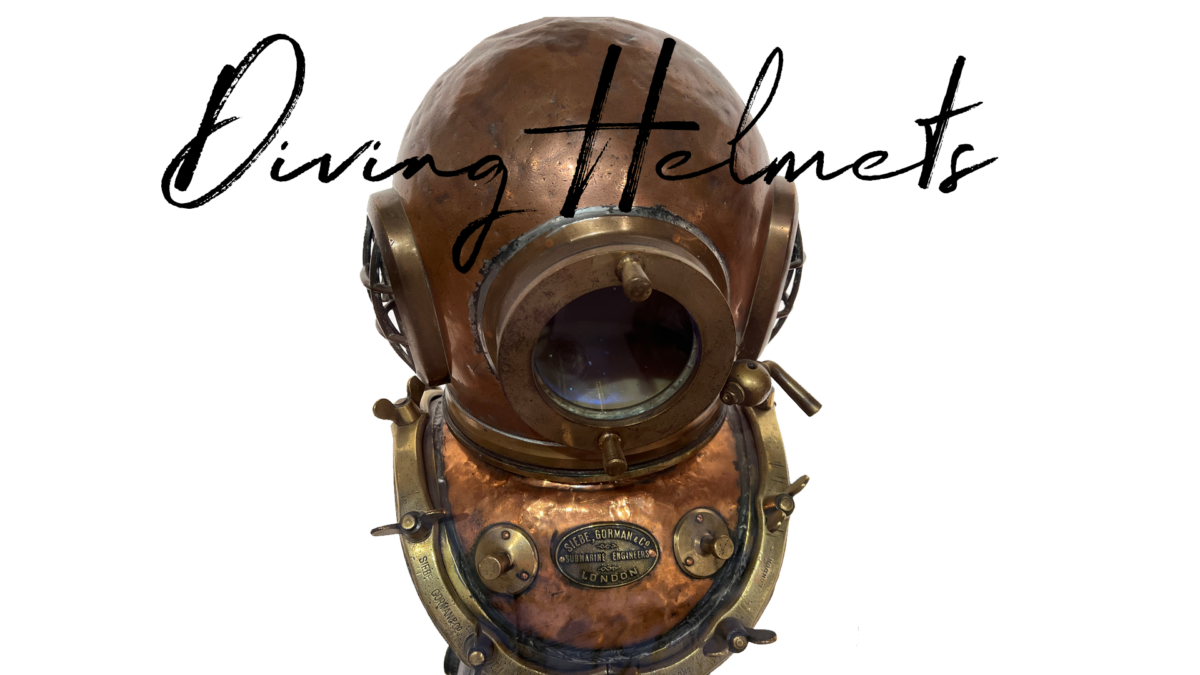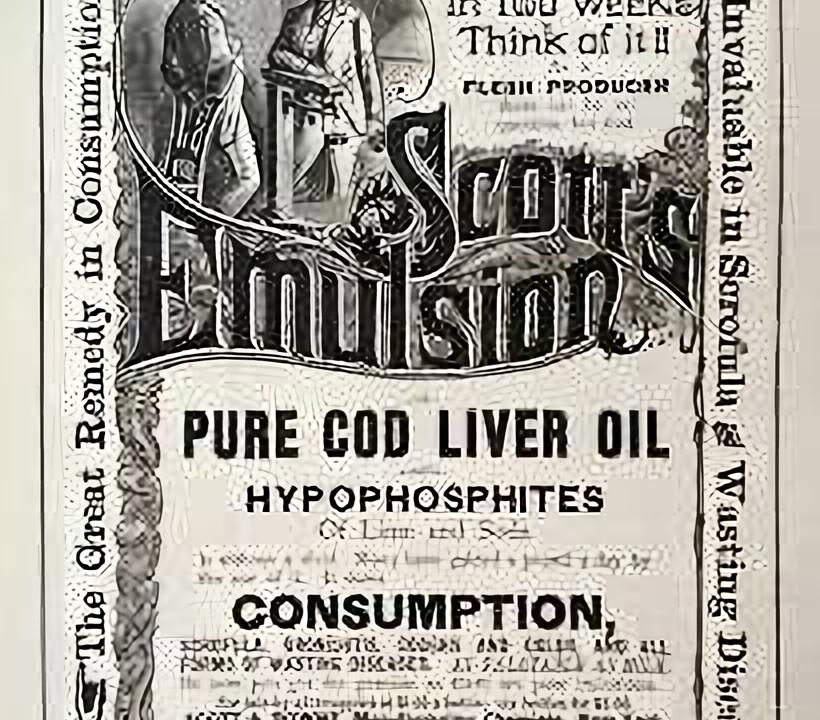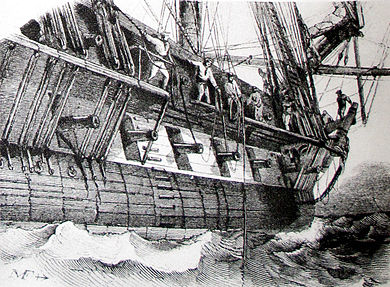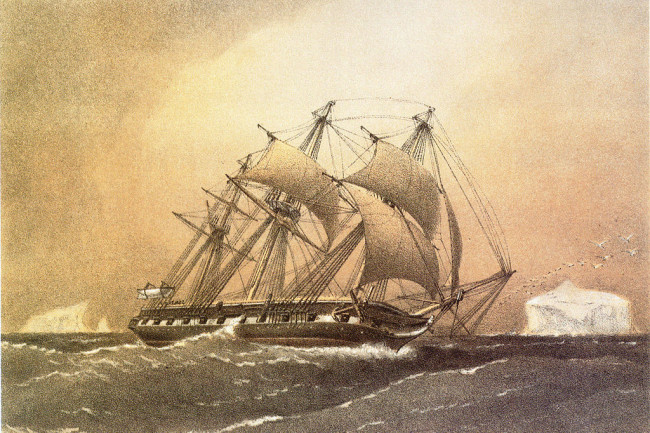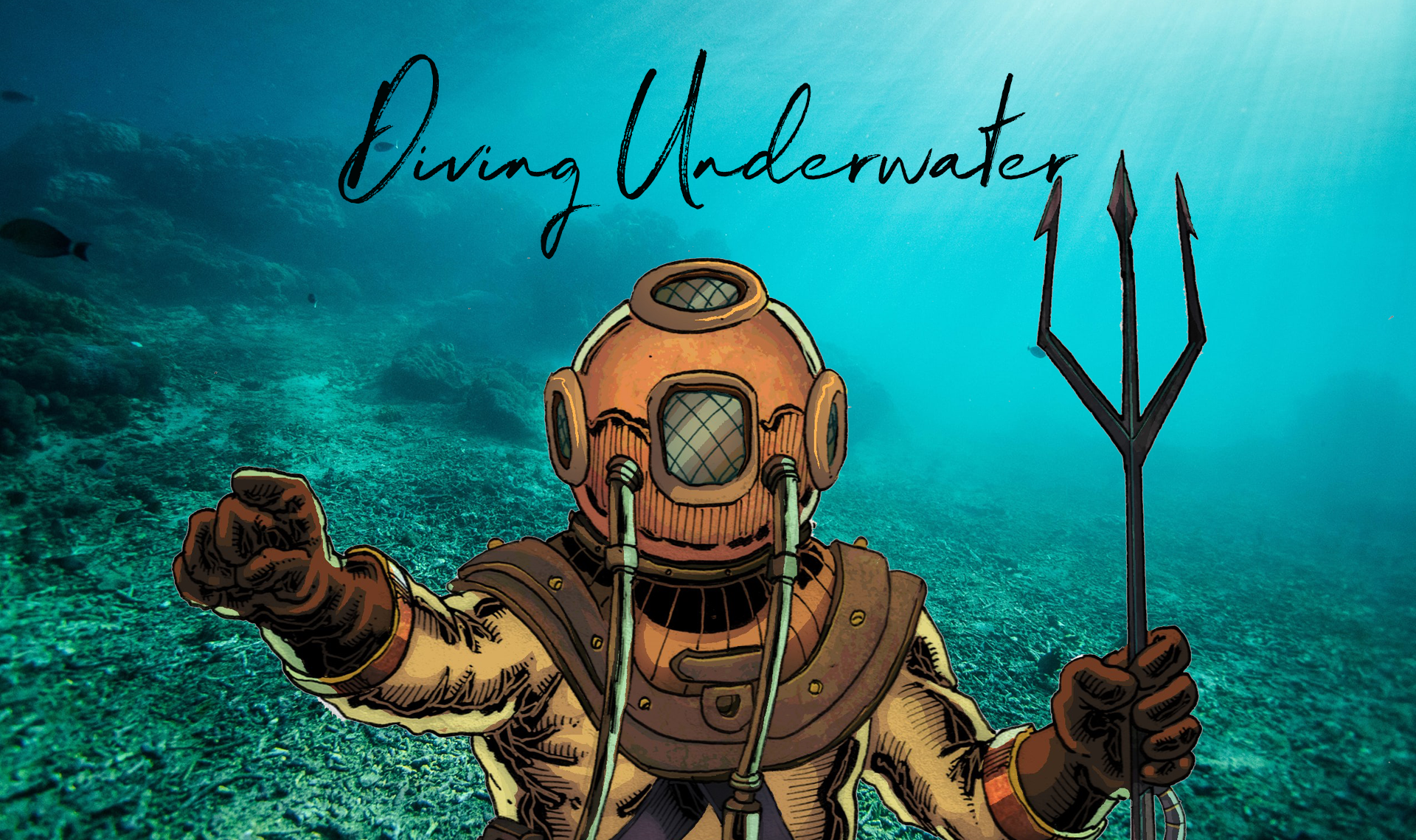
Going Under Water
September 12, 1878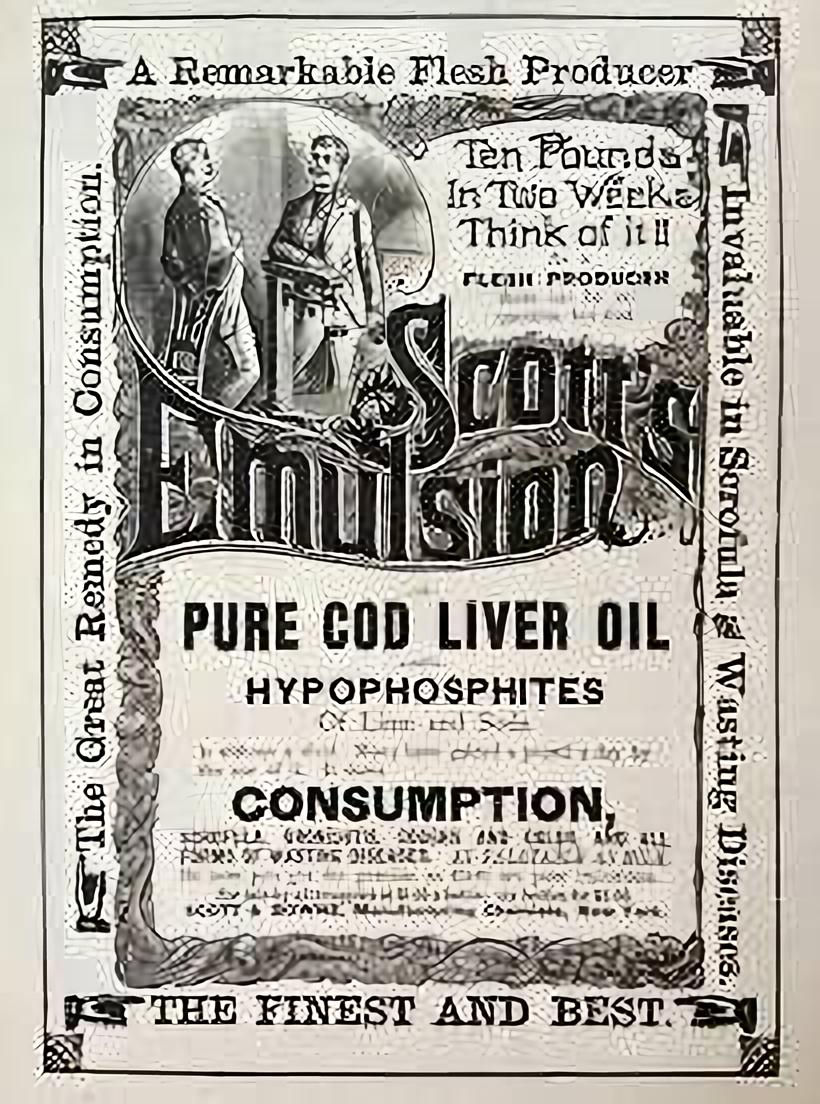
Treating Sickness and Disease at Sea
September 29, 1878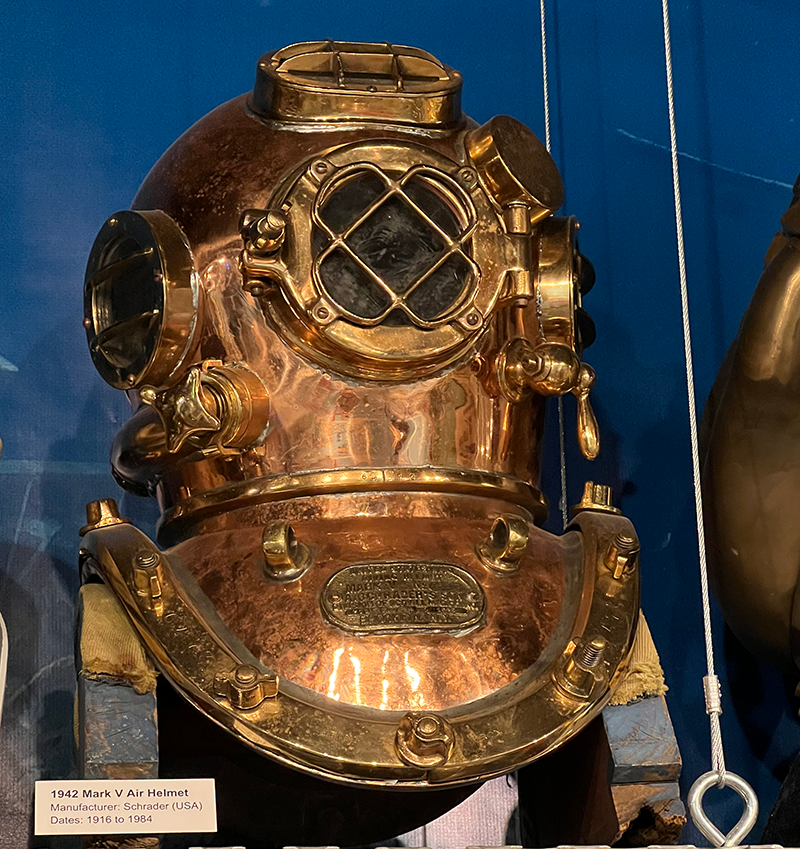
In the Thousand Fathoms Story, our main characters don diving suits and helmets and drop underwater to do research and look for samples. This was done during that time period extensively as our knowledge of the sea was very limited.
When we think of the iconic images of divers we actually think of one to two specific diving helmets that were developed by the US Navy in 1916. But closed diving helmets were actually created in 1839. Agustus Siebe produced the first closed diving helmet attached to a waterproof canvas suit with 12 bolts.
Additionally, we consider 20,000 Leagues Under the Sea with Captian Nemo and his iconic suit.
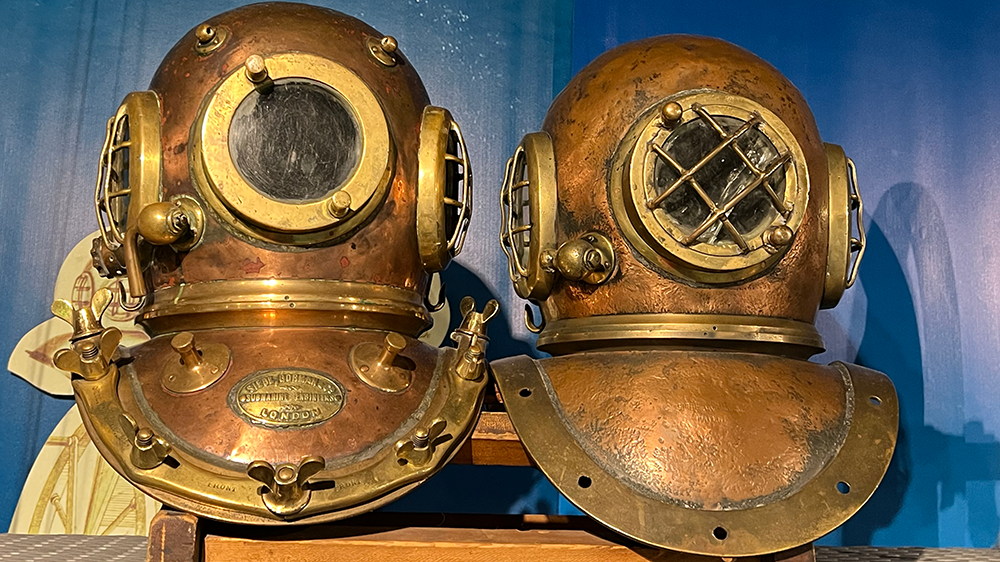
Siebe used suggestions from divers to improve his design, separating the bonnet from the breastplate. Siebe’s system was selected as the best by Colonel Pasley during the salvage of the HMS Royal George at Spithead (1840 to 1843). Siebe’s closed design would dominate diving for the next century.
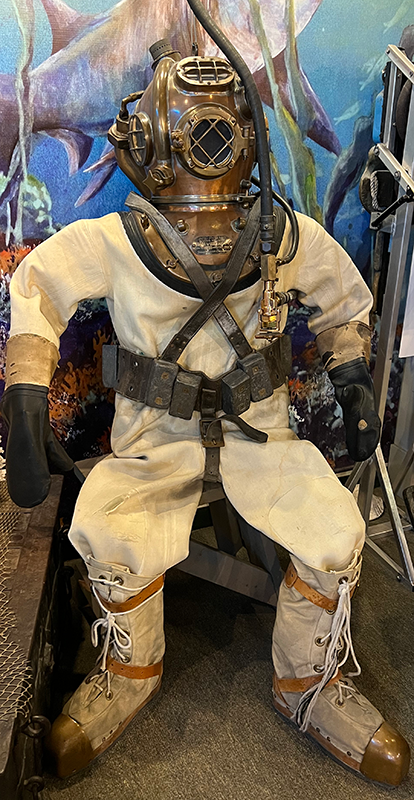 At the request of the Deane brothers, Siebe built the first effective piston pump capable of providing air to a diver to a depth of 100 feet. Prior to that time, the air had to be supplied by bellows pumps allowing divers to work only about 30 feet.
At the request of the Deane brothers, Siebe built the first effective piston pump capable of providing air to a diver to a depth of 100 feet. Prior to that time, the air had to be supplied by bellows pumps allowing divers to work only about 30 feet.
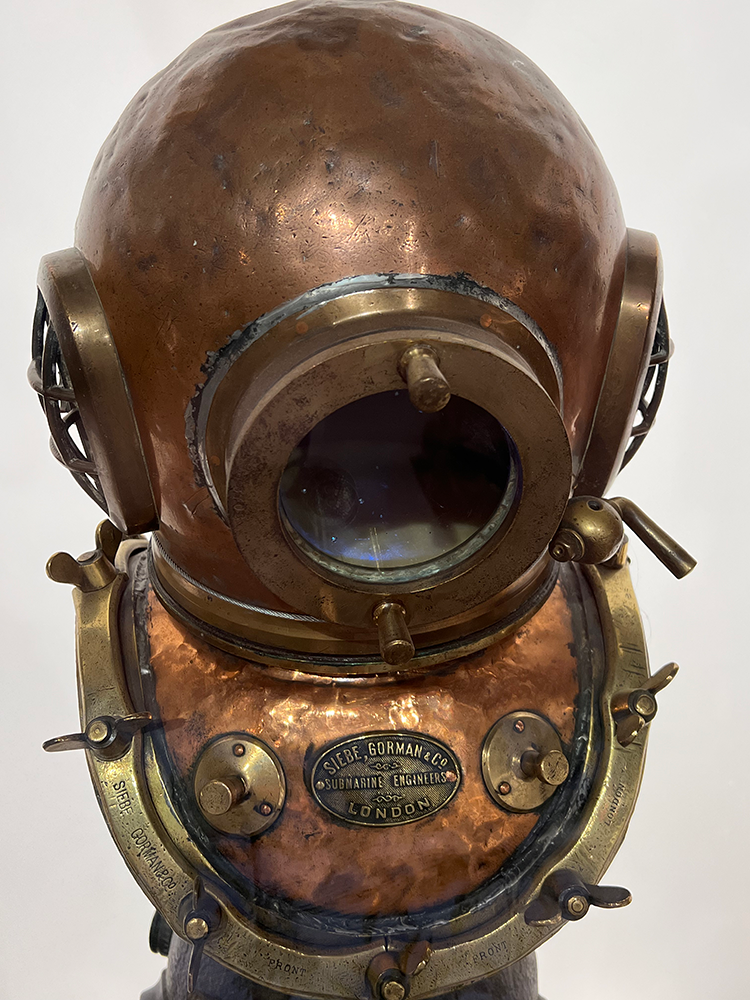 Leather hoses could finally be replaced by rubberized cotton thanks to the discoveries of Charles Macintosh (waterproof cloth) and James Boyd (100-foot firehoses) five years later.
Leather hoses could finally be replaced by rubberized cotton thanks to the discoveries of Charles Macintosh (waterproof cloth) and James Boyd (100-foot firehoses) five years later.
Development of the Mark V Diving Helmet
In the late 1800s and early 1900s, military divers used many styles of diving apparatus from the U.S., England’s Siebe Gorman, and Germany’s Drager. These equipment types were incompatible with each other causing intolerable confusion. The Military needed its equipment to be standardized.
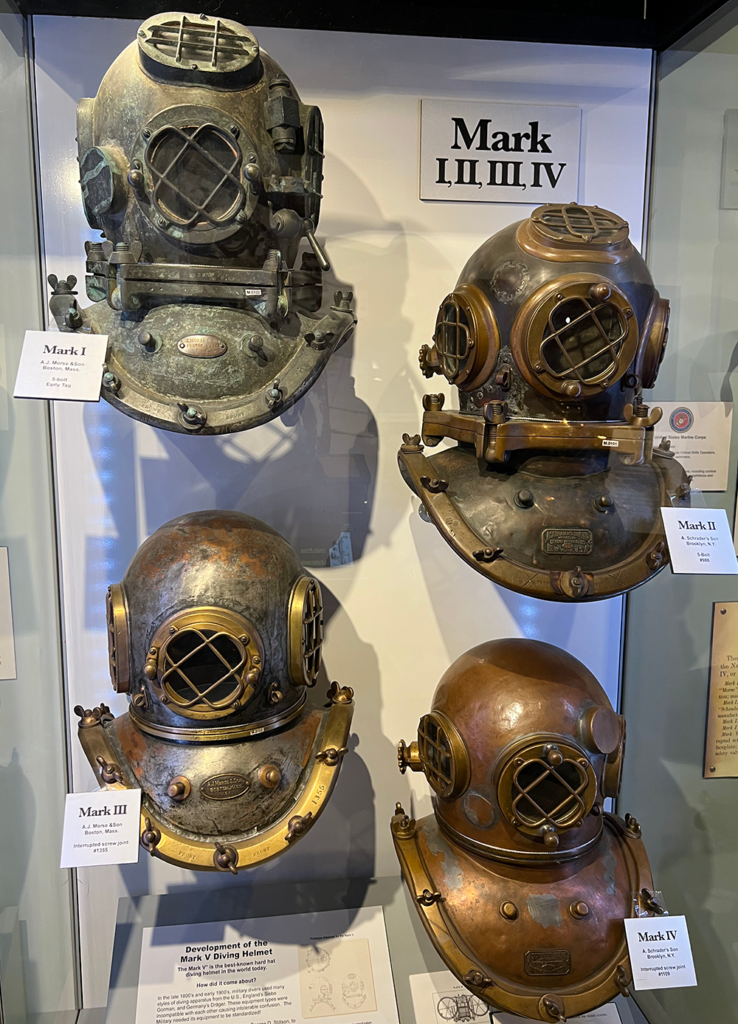
In 1912, the Navy assigned a diver, Gunner George D. Stillson, to research, design, test, and evaluate diving equipment and procedures.
In less than three years, this remarkable diver took the best of each of the 4 style helmets in use at the time and developed the Mark V. Stillson also tested Haldane’s diving tables and stage method of decompression. Throughout this period, Navy divers went progressively deeper than their customary depth limit of 60 feet, eventually reaching a depth of 274 ft or 45.6 fathoms.
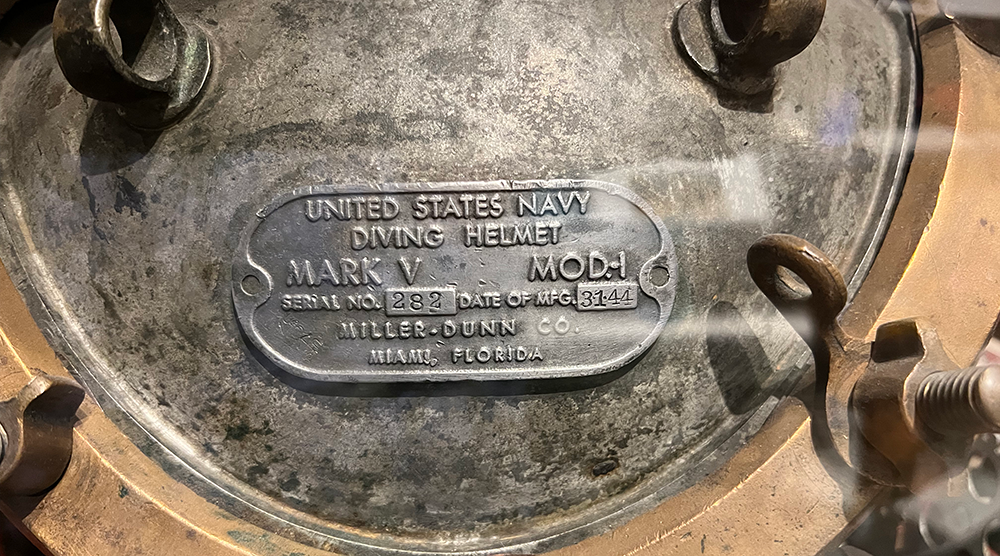
Stillson’s report led to the approval for production of the U.S. Navy Standard Mark V Mod 1 Diving Helmet in 1916. The Mark V was produced from 1916 through 1984 by 4 different helmet manufacturers. It was then decommissioned in favor of a lighter low volume demand style helmet. You can check out all of the examples pictured in person at the History of Diving Museum in Islamorada, FL which is in the Florida Keys just south of Key Largo. History and pictures taken during a recent visit.
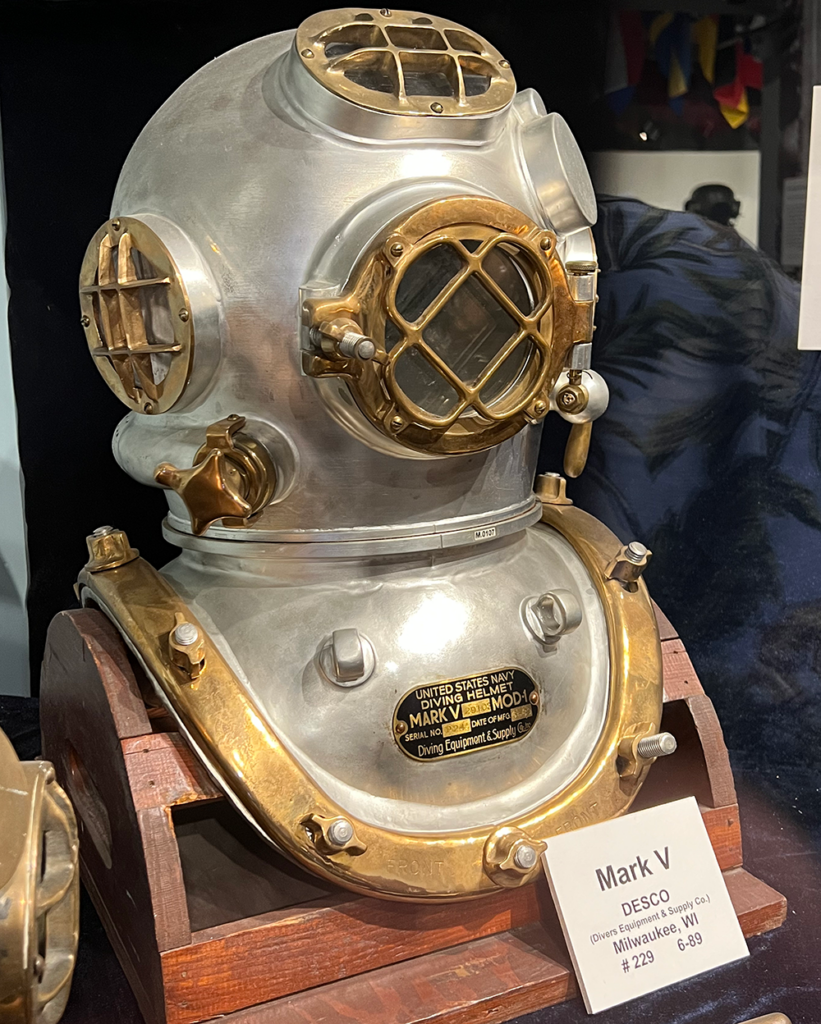
Mark V adopted as standard, interrupted screw type; narrow breastplate; improved regulating escape valve, hinged faceplate, oval top window round side windows; improved telephone connections, safety valve, air inlet connection; supplementary relief valve.
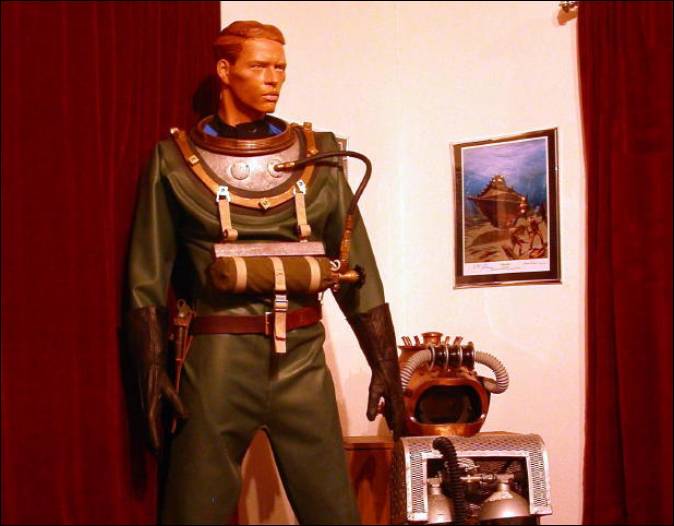
Captain Nemo replica Suit and diver from 20,000 Leagues under the sea. Photo Credit.
MERCH
Interested in checking out a cool t-shirt based on the Mark V? Check it out here.
-
 Thousand Fathoms: Mark V Diving Helmet Blueprint Schematic T-Shirt$17.50 – $46.06
Thousand Fathoms: Mark V Diving Helmet Blueprint Schematic T-Shirt$17.50 – $46.06 -
 Thousand Fathoms In Too Deep Aged$14.91 – $19.38
Thousand Fathoms In Too Deep Aged$14.91 – $19.38 -
 Thousand Fathoms In Too Deep$14.91 – $19.38
Thousand Fathoms In Too Deep$14.91 – $19.38

